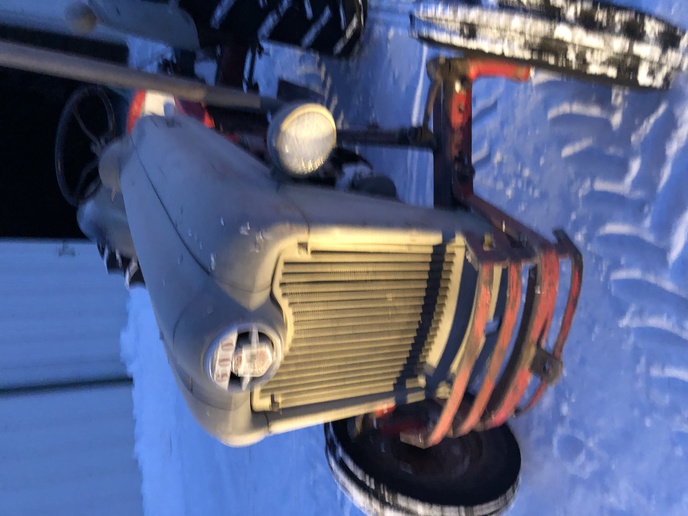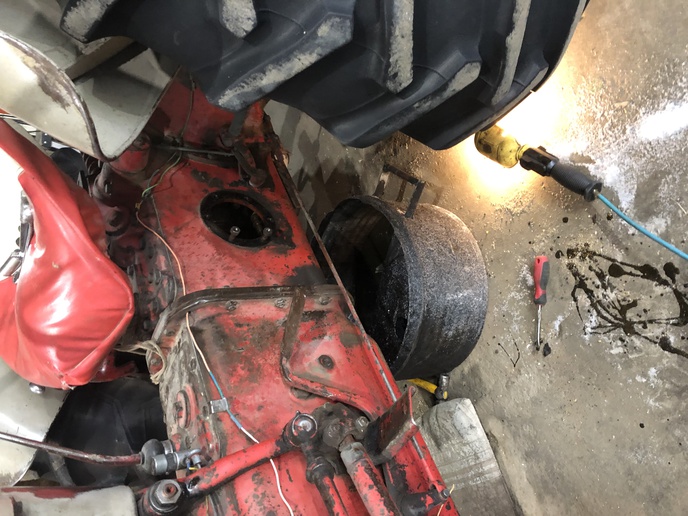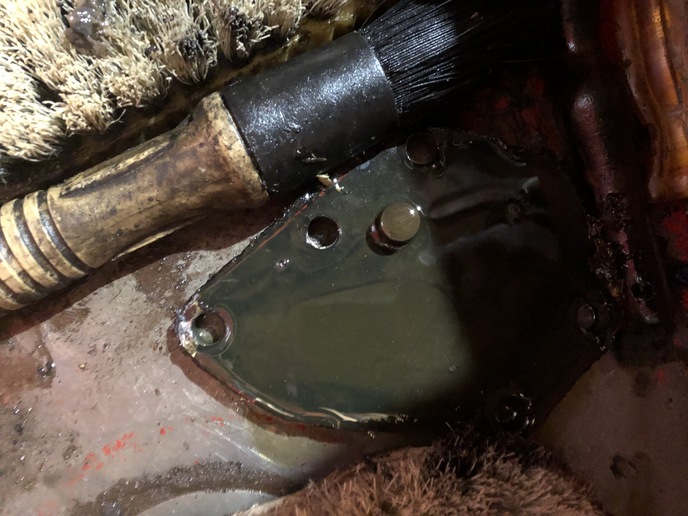First time posting on this board. Have had a 600 on the farm for 40+ years. Tractor is used all the
time. When I was a kid I'd bet it was getting anywhere from 200-300 hrs a year. The other day it fired
up at say -5 to -10F. I had a 3 pt blade on the back and wanted to use it to pull some snow away from
some buildings. The 3 pt is one thing rarely used in the winter so maybe just never noticed this before.
After reading stuff online some talked about sludge in the bottom of the hyd reservoir. Never having been
in there for a really long time I removed the PTO lever/cover and found things to be very clean inside.
There was a also a plate on the bottom of this reservoir so I took that off pretty much finding nothing.
We simply run in the hyd portion was we call UTF, or equivalent of Deere Hygard which I run in all of my
farming tractors.
Is my pump worn, oil too heavy for these temps, something in rockshaft cover causing this, looking for
tips and ideas. Sorry for the tipped photos. Unsure in this forum how to rotate them. TIA



time. When I was a kid I'd bet it was getting anywhere from 200-300 hrs a year. The other day it fired
up at say -5 to -10F. I had a 3 pt blade on the back and wanted to use it to pull some snow away from
some buildings. The 3 pt is one thing rarely used in the winter so maybe just never noticed this before.
After reading stuff online some talked about sludge in the bottom of the hyd reservoir. Never having been
in there for a really long time I removed the PTO lever/cover and found things to be very clean inside.
There was a also a plate on the bottom of this reservoir so I took that off pretty much finding nothing.
We simply run in the hyd portion was we call UTF, or equivalent of Deere Hygard which I run in all of my
farming tractors.
Is my pump worn, oil too heavy for these temps, something in rockshaft cover causing this, looking for
tips and ideas. Sorry for the tipped photos. Unsure in this forum how to rotate them. TIA




